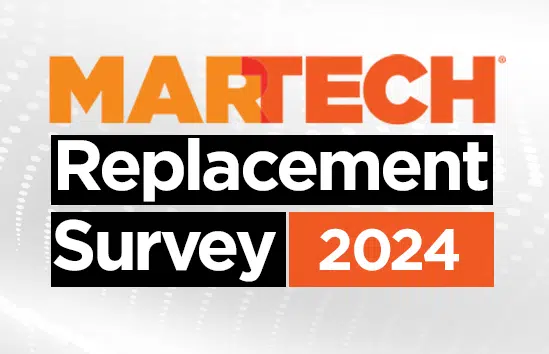Retail media networks (RMNs) are a fast-growing space in advertising — up 16.3% last year. Retailers are adding channels and providing better measurement and execution for advertisers. And agencies are answering their clients’ calls to include RMNs in the mix.
While brands are increasing their spend, there are still growing pains around the lack of standardization. Without the ability to compare apples to apples from one RMN to another, brands and agencies are left with more number-crunching and guessing. However, the opportunity to reach high-intent customers within a retailer’s network is too powerful to pass up.
So what’s the current state of the RMN-advertiser relationship? That was the focus of an IAB roundtable this week featuring agency and RMN representatives.
IAB introduced media measurement guidelines in September 2023 so RMNs and adtech partners could begin to help brands and agencies connect the dots. If it’s easier for advertisers to execute and measure campaigns across multiple RMNs, they’ll increase their overall spend, the theory goes.
“We were very cognizant that adoption [of measurement guidelines] would take 12 to 24 months,” said Jeffrey Bustos, VP, measurement addressability data at IAB. “I think from all the conversations with retailers, the momentum and their investment in moving toward standardization is still very strong.”
While standardization remains a goal rather than a reality, the increasing opportunities within individual RMNs as they expand offsite and in-store offerings make them something advertisers must consider.
“When you look at retail and consumer spending, a lot of that still happens in a store format,” said Praveen Menon, head of analytics and business intelligence for CVS Media Exchange (CMX). “Someone like CVS, who has 9,000 stores, [attracts shoppers] coming into these stores with a lot of attention and urgency, with a clear consumer need they’re looking to fulfill.”
CVS Media Exchange can measure the connection between when loyalty members search in the CVS app or online and when they purchase in-store through the loyalty program.
“Over 50% of our loyalty members, when they browse something online, they come to our store within 48 hours,” said Menon. “For us, the in-store experience is a key unlock.”
CVS plans to build better shopping and ad experiences through in-store screens and other touchpoints. The retailer has 1,700 screens in its stores and plans to add more this year.
Dig deeper: Why we care about RMNs
Data collaboration for offsite measurement needs
At some level, all RMNs serve the function of a data collaboration. The retailer uses customer data in a privacy-safe way to help outside parties serve timely, relevant messages. This collaborative environment extends to offsite channels beyond an RMN’s owned digital and in-store properties.
For instance, CVS partnered with visual discovery platform Pinterest and adtech company LiveRamp on a clean room initiative that helps CVS measure the effectiveness of offsite ads on Pinterest that lead to CVS purchases by loyalty members.
“What data clean rooms allows us to do is to provide advertisers and agencies with precise, attributed and meaningful performance insights for campaigns they run with CMX, especially on offsite channels where we have limited ad exposure data,” said Menon. “This really allows us to report back about performance with a high degree of accuracy.”
He added: “On some other platforms, where they don’t share some of those ad exposures or don’t collaborate via clean rooms, measurement is more of a black-box solution. So for us, as we think about our innovative offerings, we want every channel that brands invest in through CMX to be measurable.”
Advertisers and agencies push for standards
This collaborative environment might one day lead to multiple RMNs adopting the same measurement standards. That’s at least the intention with the IAB guidelines. Agencies are seeing great RMN interest from clients. Agencies and brands have influence, through the budget they spend, to support RMNs that are standardized.
“We have to put our money where our solutions are,” said Evan Hovorka, VP of product innovation, Albertsons Media Collective. “That might require some brands forcing the next dollar to go to an RMN that supports some of these adopted standards.”
“What’s really interesting is that our [clients] are so excited to adapt and test and learn, because they’ve seen the success of retail media,” said Kavita Cariapa, SVP, head of commerce activation at dentsu. “And luckily there’s actually a good framework being built out with partners like CVS and Albertson’s. There’s a groundwork built on tech partnerships, collaboration.”
“Outside of its adoption rates, there are a couple of [IAB member RMNs] that have done fantastic jobs,” said Riyaad Edoo, executive director of commerce at EssenceMediacom. “Accountability is really what holds progress back. If my investment (on behalf of a brand client) isn’t going to directly reflect what my asks are, then those asks are empty. But that might not be the right conversation. In most instances, we can survive on some amount of measurement inconsistency and not be happy about it. We do have advanced data analytics teams working tirelessly to sort of weather these anomalies.”
“One of our biggest wins that we present to our brands is, baseline, how to inform a channel investment,” said Cariapa. “There’s always questions on how and when and where to invest. How do they invest in a retailer as they expand their opportunities?
Dentsu reports how clients are growing market share with campaigns and how specific channels perform, so brands aren’t just tracking impressions but results, Cariapa said.
Less than halfway through IAB’s two-year estimated timeframe for guideline adoption, it looks like better RMN measurement is likely, as advertisers and agencies continue to invest in this growing ecosystem.


